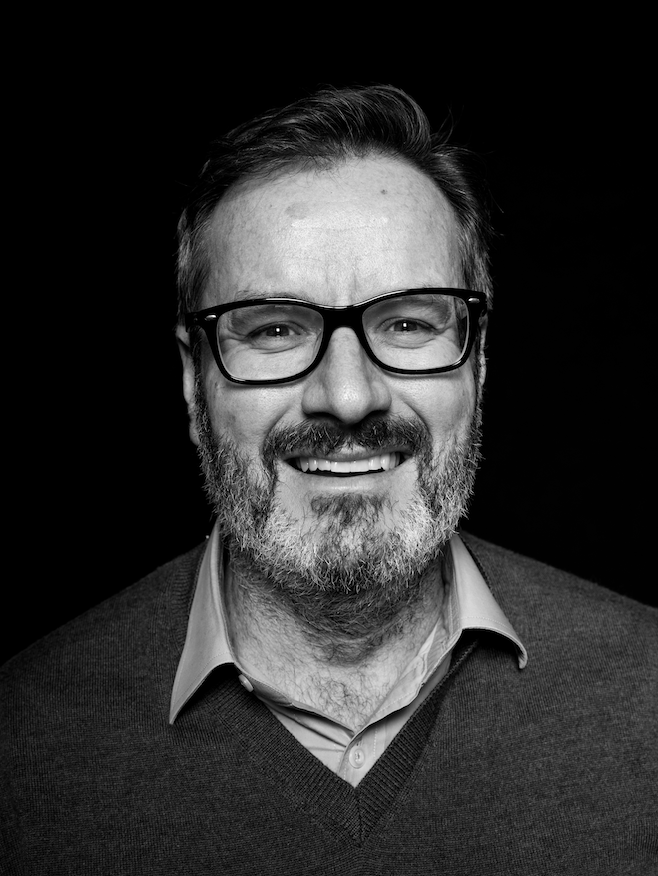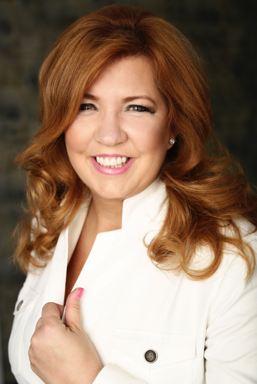Transcripts

Erik: Joining me now is Jeroen Blockland, who is founder and head of research for True Insights, a new investment research platform focused on multi-asset investors around the globe. Jeroen has produced a fantastic slide deck to accompany today's interview. Registered users will find the download link in your research roundup email. Now if you don't have a research roundup email, that means you're not registered yet at macrovoices.com. Just go to our homepage, look for the button that says looking for the downloads at macrovoices.com.
Jeroen as we dive into this, I'm really excited to get you in the program. Being in Rotterdam, you've got obviously a European perspective. Our Federal Reserve has been telling us over on this side of the pond that hey, don't worry, this inflation stuff is just transitory, it's not going to last. What's your take on inflation? Where's it headed? What does it mean?
Jeroen: Yes, well, thank you for having me. And to get right into the topic of inflation, which is, of course on everybody's minds. So basically, you have these two angles to look at it. First, you look at these, mainly the three big components that add to inflation in recent months. The usef cars, airfare, and hotel rates, and you see that they have peaked. So the year-on-year change on these items is still very large. But for example, used cars, they fell in price one and a half percent in August. So from that angle, I think most central bankers are pretty convinced that the inflation being transitory is still alive as well. And also, if you look at page nine of the slide deck, if you look at the flexible versus sticky CPI, and this is calculated by the Atlanta Fed. You see there in the chart that the core sticky CPI is actually not much higher than the long term average. And also, if you look at it from 2015 onwards, it's actually in the middle of what it has been. So if you argue that this is only about flexible prices, and again, used cars prices, airfares, and hotel rates are in that category, of course, then you can say inflation is transitory and also you see in this chart that even the flexible component is coming down a bit.
So from that standpoint, you could argue it is transitory. And I think also you should take into account that over the last 10 years me included, we have thought of higher inflation many times, but it never came. And this is because mainly there are some big deflationary forces at work, globalization, technology, and so on. So the odds are also against you and I think the base case of the Fed are more favorite. Having said that, there are a couple of indicators that point to continuously or longer than expected, higher inflation rates and perhaps not 5% or 6%. But maybe a longer time in above 3%, or even 4%. A couple of these things I want to mention is first, if you look at inflation indicators, so the ice and prices paid index, it's close to 80. That is down from 90, but it's still historically high. If you look at the latest Empire State survey, the prices received component is at a record high. And it has a very strong relationship with, among others the core PCE, one of the favorite inflation integrator of the Fed.
And two other things I would like to highlight. First is owners equivalent rent and you can see that on page eight of the slide deck, you see there's a clear relationship, obviously between owners equivalent rent and house prices. Well, we've got another data point on house prices just today. So house prices are up almost 20% and this is what the green line shows. And you can also see that owners equivalent rent, they take about 18 months to catch up with these housing price appreciation. And that means that from now, and let's say 12 months, it is very achievable, that this owners equivalent rent component of the CPI basket will rise to above 4%. Now it has a weight of 25%. So you can do the math. So this will be a upward pressure on inflation for at least another 12 months unless the US housing market collapses. And that is not the case, I think we are close to the peak, but it won't collapse immediately. So this is also a thing to take into account.
And finally, and that's on page seven, there's also a thing called the medium price rise and this is just the middle of the whole range of the whole U.S. CPI basket and you take the middle price increase and in August that was 0.34%. And you can see by the arrow, that was the biggest increase monthly increase we had since February 2007. You can also see that the month before that July 0.3% was also relatively high. So the median price level, I think something that central bankers would also look at is increasing at a faster pace than we have seen for a long time. And I think if you add these things together, and the fact that we are seeing supply chain disruptions getting worse and not less, or they're actually getting worse well, not perhaps 5 or 6%. But that we see, clearly above average inflation for let's say, the next 60 to 12 months, I think that is that is, the odds of that are not low. And that is why we have a somewhat more nuanced stance on this whole inflation is transitory narrative.

Erik: Joining me now is Juliette Declercq, founder of JDI Research. Juliette has prepared a slide deck for us for today's interview. Listeners will find the download link in your research roundup email. If you don't have a research roundup email, just go to our homepage macrovoices.com. Look for the red button that says looking for the downloads. Juliette markets have been directionless and a little bit difficult for the past few months. Now you specialize in splitting out underlying trends from noises. So how about if we start with your macro diagnostics since we last spoke?
Juliette: So let me think about them. When we last spoke, I think it was in March when we were nearing a macro inflection point. And you've got a great timing in reminding me on your show Erik because I think we're nearing another inflection point, which normally should mean good trading opportunities. So let's start with what really happened since we last spoke. If you check chart 1 and 2 of the chart deck that I've produced for your listeners. You will see that the reflation trade which started on the COVID vaccine in early November 2020, and which consensus strongly believed was going to be the main theme in 2021. As now fully unwound, and unsurprisingly cyclical stocks and real yields were the main casualties. It's also interesting to note that the peak in real yields and cyclical outperformance also coincided with a global demand peak, as shown by the peak in the global PMI survey.
So what really happened? I think the answer is that investors grew too comfortable as normally happens in earlier but this year was like a particularly was different because of like the massive leverage that was available in market. So I think investors grew too comfortable in big size with the narrative of the grand recovery trade and the view that cyclicals would basically sail into the sunset. When consensus is overwhelming, it doesn't take much to disrupt trends. And inevitably, three things ruin the party. One, higher production costs and persistent supply bottlenecks curtailing company's growth potential. Two, the secondary effect of higher prices suppressing consumption. And three, obviously the rise of the Delta varient this summer, depressing animal spirits just as most of the developed world we're starting to see light at the end of the COVID tunnel.
So um, let me start here with the global supply chain crunch. Instead of seeing an easing in 2021, we actually experience a worsening far beyond the ones in 2020. We can blame a front loading of Christmas orders and delta and use port closures in Asia. I was speaking just last week to a luxury perfume maker in France, and they would have had the absolute best year ever in 2021. If it wasn't for the fact that they can't deliver on orders. It's not the glass bottles that are made in France or Italy. But what they're missing is basically the plastic tops that are made in China. The issue is, is that the explosion of globalization in the past two decades. Goods production depends on intricately intertwined global supply chains. I'm not teaching you anything here, a missing link and delay prediction tremendously. And persistent semiconductor shortages is another prime example.
Meanwhile, global manufacturers face bidding wars for space on vessels pushing Fred rates to records as you can see on chart 3. So even if you did manage to get your orders shipped, cost pressures remain acute and we are yet to see a peak there. There is really no secret. You get price inflation when the money supply - which tends to lead global demand - rises much faster than the supply of products and services. And as shown on chart 4, the Global Bottlenecks index has now peaked, but it remains extreme historically. So the question going forward is whether prediction will eventually catch up to strong demand as the supply crunch eases, or whether inflation will eventually kill reflation in the stagflation scenario that we have been pricing since May.

Erik: Joining me now is Bianco Research founder Jim Bianco. Jim, it's great to get you back on the program. It's been such a long time. For any new listeners who aren't familiar with Jim. He's kind of our MacroVoices hero, the guy he along with Dr. Chris Martenson, who really helped us be the first financial media outlet to call the COVID pandemic. So Jim, it's great to have you back. I think we've already covered all the pandemic stuff back when so I want to talk about the new big trend, which I think is not just transitory inflation, like Janet says, but I think this is secular. What do you make of the inflation trend? And please make an argument either for or against secular as opposed to just cyclical inflation.
Jim: Yeah, put me in a persistent camp. I mean, that would be the opposite of transitory. I do think that what we're going to find over the next several months is the inflation is going to stick around a lot longer than we think and it's going to be a bigger problem than we have. Let's take the data. For starters, the day we're talking is the day that the CPI report was released. And let's break it into two broad categories. Transitory inflation, and that would be things like airline tickets, restaurants, rental cars, hotels, motels, in the like, and non-transitory items and what you'll find is that the transitory items have definitely peaked, and they're on their way down. But the non-transitory items, that's everything else, with the big part of that being shelter inflation, which includes owners equivalent rent, and rents of primary residence, that's moving up. And that's at the highest level, at least in four years and making new highs.
So there is a transition going on in the inflation dynamics from the transitory stuff, to the more persistent stuff. Now, I'm not of the camp, that inflation is going to be big numbers, like 5, 6, 7 percent, because I do believe that demographics, globalization, and technology will hold it down overall. But I think we could see a three handle stick around a lot longer than we think when it comes to inflation. And why is that an issue, because we've got a 1.25 10-year note yield. If we had a 3.50 100-year note yield, no big deal. But when you have a 1.25 10-year note yield, and you have a realization, that inflation might stick around in the three handle, that could pose a problem for the bond market. And if the bond market eventually gets a problem, then everybody has a problem.

Erik: Joining me now is Paul Krake, founder of View from the Peak. Paul, it's been several years since I had you on the program, it's great to get you back. I want to imagine because so many people have said that in finance the week after Labor Day tends to be kind of when the big boys get back from the Hamptons and things start to move. I want you to imagine you've been running the macro desk for the biggest bank in New York for the summer and the big boys are back from the Hamptons, and your job is to brief them. What are the macro trends that they need to be thinking about? What are the thematic, macro things that are on the horizon? What should they be thinking as they take over the reins of the macro desk?
Paul: So Erik, am I in the office or am I still at home?
Erik: Hahaha, I don't know.
Paul: Because that is obviously a big part of it, right? Because, you know, if you're looking at this, you know, if you look at the world through a traditional macro lens. A lens that I think is structurally flawed, and we'll get into that a little later, but this rolling three month, this rolling three month cycle that that the macro world tends to live in. You know, obviously, if you're looking between let's take a little further and say now, in the end of the year, you've got the sort of the two, I think there's two major narratives that you need to think about or three. Firstly, is COVID and the and the transition towards the reopening world, Delta variant, then the vagaries around that, and how that's affecting different parts of the world, putting them in different cycles and the like. Secondly, and most pertinent to the value of asset prices is the prospect of tapering. Do they? Don't they? When when does that begin? And how does that work into the economic framework that we look going into 2022.
And the third thing, which again, we are looking through this rolling three months window is is common prosperity is the notion of what China is doing. And that Erik, I assume we don't have five or six hours to explore that in the depth that that deserves. And I think if if I was to make one observation at the morning meeting at my very large investment bank, where I run macro. I would say to everyone to look at this through a blanket approach or a singular lens is the wrong way to look at China currently, because it is much more nuanced and complicated than most people think. And, frankly that framework of China and common prosperity is more than a three month is more than a three month view. And I think, frankly, the other stuff of the lingering effects of COVID, or this is what I call COVID scarring, how that plays out. And obviously the implications for tapering, a rate tightening cycle. Do we actually get to that rate tightening cycle obviously goes further than the end of the year, but within the three month window, that's what we think you should be thinking about.

Erik: For this year's two part Summer Special we're going to focus on the digital currency and decentralized finance revolution that has already begun. As many listeners know I wrote a book on this subject back in 2018. But a lot has changed since then. So we're calling in the experts for an update on what I believe will be the single most important trend of the next two decades. I'll be joined by two expert guests for this two part special. My first guest is Dr. Pippa Malmgren former US presidential adviser, best selling author, and partner in the Monaco Foundry, a startup incubator in Europe. Pippa, thanks so much for joining us.
Pippa: Thank you for having me as always.
Erik: Thanks, Pippa and also joining me as a first time guest on macro voices is Clint Cox. Clint is the Co-Chief Investment Officer of Crypto Futura Fund and has been following crypto closely and investing in it since 2015. Clint also spends considerable time looking at macro trends on a global scale. Clint, welcome aboard.
Clint: Hey, thank you, Erik. It's gonna be a blast to be on the podcast with you and much appreciated.
Erik: It's great to have you on as a first time guest. I'm going to start by asking each of our panelists to share their high level big picture view of both digital currency and decentralized finance. What is it going to mean to financial markets, and for that matter to broader society and the course of world history. I'll start with my own view on the subject, and then ask each of our guests to share theirs. I am personally convinced that the invention of the secure digital bearer asset. That's the fundamental innovation that underlies both digital currency and decentralized finance, will make a more profound change to society, and the course of world history than the advent of the personal computer, or the commercialization of the public Internet. I really am convinced that it's that big of a deal, and that it will completely change what money itself is, how it works, and how we use it. We are very, very early in this story.
Cryptocurrencies like Bitcoin have been around for more than a decade, but they only play a small part in the much bigger story, which has only just begun to unfold. The Bitcoin fan club acts as if Bitcoin is going to take over the universe. But I think that so far, they're only seeing a very small part of the overall picture. Meanwhile, central banks have finally woken up and recognize the need for central bank digital currencies or CBDCs. But frankly, their efforts to date have been lame at best. So far, none of them seem to have recognized the opportunity to design digital monetary policy transmission tools into CBD systems. Something I'm convinced will eventually be seen as the principal appeal of CDBCs in the eyes of central bankers. Silicon Valley smells blood, and already knows that the grand prize in this story goes to whichever digital currency system ultimately replaces the conventional US dollar as the world's global reserve currency.
The financial media is completely out to lunch. The most common quip is oh! But the financial system is already digital. CNBC hosts are not the only ones completely ignorant to the distinction between true digital cash and the digital accounting systems that have been used for decades to manage conventional currency deposits. Even big institutional funds that offer exposure to cryptocurrencies are often managed by people, who as far as I can tell, are completely clueless as to where all of this is ultimately headed. Moving beyond just digital currency, decentralized finance or DeFi for short, refers to the application of secure digital bearer instruments to trading of securities and other assets. This directly enables disintermediation, the elimination of the current institution based financial system with an asset based system, where counterparty risk could be practically eliminated in ways beyond the wildest dreams of the designers of the current system.
What I've summarized so far is just the tip of the iceberg, the trends that are already hot topics in finance, but there's so much more coming over the near horizon. So far, almost nobody but me is talking about the benefits of a true digital sovereign bond market. Someday, a new generation of tech savvy central bankers will take office and they'll be quick to understand why Secure Digital bearer assets are inherently superior to any conventional currency, and central bank reserve assets. When that happens, the US dollars monopoly as the global reserve currency will end. But it doesn't end with digital currency and define. Ultimately, we have the opportunity to re-engineer the entire fractional reserve banking system, meaning that what money actually is, how it works, and particularly how credit is extended will change completely. This will be a complete and total game changer for the banking industry.
And my prediction is that some of the largest and longest standing commercial and investment banks in the world will eventually be displaced by new tech savvy financial institutions whose names we haven't even heard yet. So my goal in this year's summer special is to really expand the conversation to not just digital currency in the current DeFi trend, but to the ultimate digitalization of the entire global economy. We're headed into an entirely new era of finance, where the centuries old fractional reserve banking system will eventually be replaced with something much better, and how credit works will change completely for all borrowers, from individual consumers to entire nations. So I think we have a whole lot to talk about today. But already, I've gone on too long with my own vision of where this is headed. So now I'd like to ask our expert guests to share their own vision of where this is headed. And by all means, feel free to disagree with me guys on anything I've said. If you feel so inclined, let's start with Dr. Pippa Malmgren. Pippa, please share your vision of the future of digital finance with our listeners.
MACRO VOICES is presented for informational and entertainment purposes only. The information presented in MACRO VOICES should NOT be construed as investment advice. Always consult a licensed investment professional before making important investment decisions. The opinions expressed on MACRO VOICES are those of the participants. MACRO VOICES, its producers, and hosts Erik Townsend and Patrick Ceresna shall NOT be liable for losses resulting from investment decisions based on information or viewpoints presented on MACRO VOICES.
